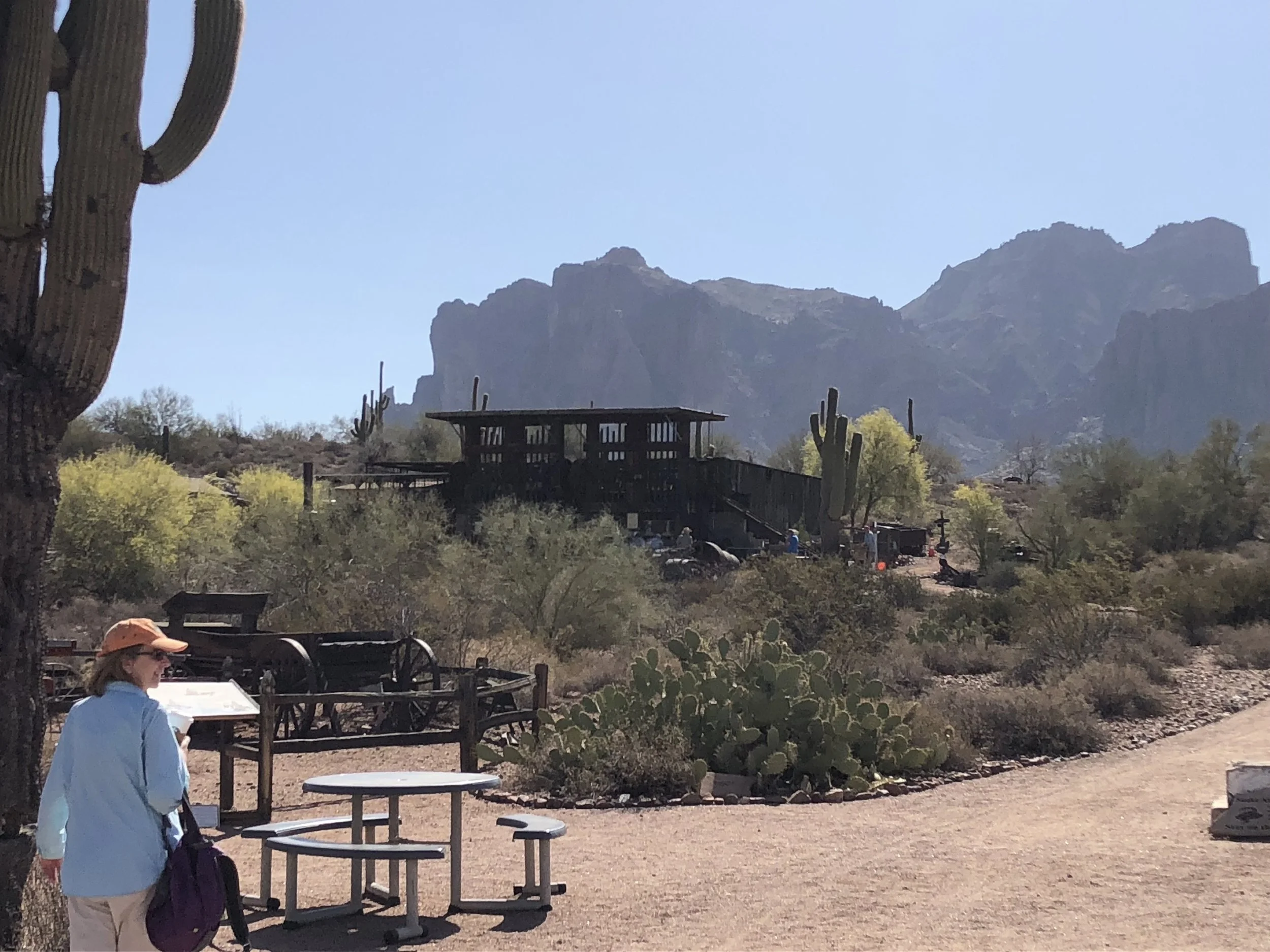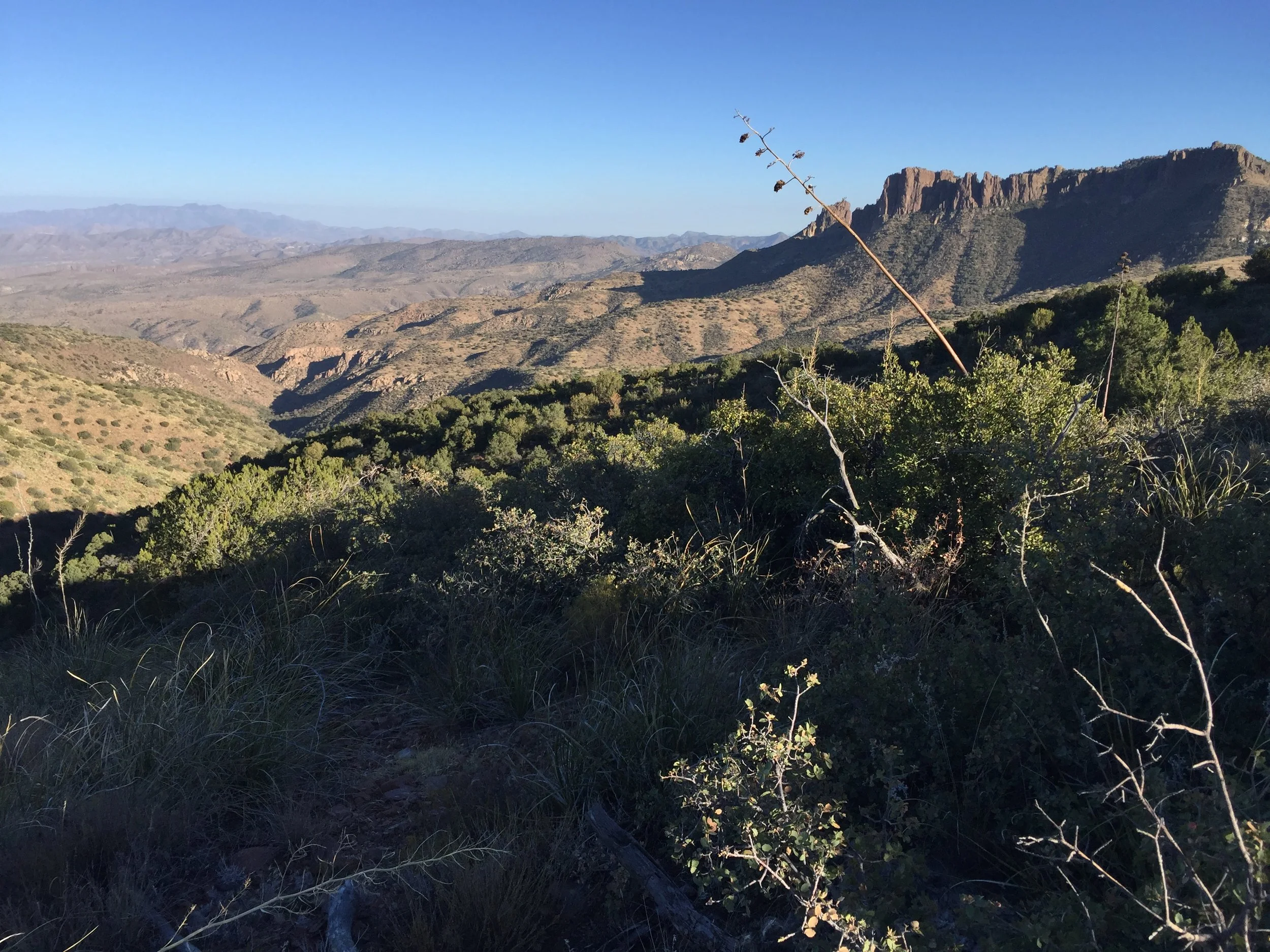The Lost Dutchman Mine: Geological Background
Most true believers in the Lost Dutchman Mine (LDM) story are convinced the Dutchman's gold came from the Superstition Mountains of Arizona, for historical reasons I've detailed elsewhere. Skeptics, including a number of government officials who, according to the more conspiratorial-minded LDM hunters, have very suspect motives, have often said "nonsense!", "the geology of the Superstitions just isn't right for gold deposits." As an exploration geologist with 40 years of experience searching for mineral deposits worldwide, and a number of significant discoveries to my credit, I'll offer my own opinion.
For starters the Superstitions constitute an extension of the Sierra Madre Occidental (SMO) volcanic province of western Mexico, which has been a major producer of gold and silver from epithermal vein deposits since pre-Columbian times. As is typical in the SMO, the Superstitions consist of a thick series of lavas, tuffs and ignimbrites, mostly of felsic composition, with lesser volumes of intermediate and mafic material, that were erupted from a nested caldera complex, from 20-15 million years ago (figures 1 and 2).
Figure 1
Figure 2
In the SMO, it is axiomatic that the largest epithermal deposits occur below the contact of the "Upper Volcanic Series" (UVS), dominated by Oligocene-Miocene (<23 Ma) felsic ignimbrites, with the "Lower Volcanic Series" (LVS), which are older, Eocene-Oligocene (40-27 Ma), intermediate and felsic volcanic rocks. Basement to the LVS consists of Laramide volcanic (Tarahumara Formation and equivalents) and intrusive rocks, Paleozoic and, rarely, Precambrian rocks. There are a few significant gold-rich deposits in the UVS, such as Ocampo and Lluvia de Oro. Deposits in both Lower and Upper Volcanic Series tend to be associated with felsic flow domes and plugs.
One of the most striking differences between the SMO and the Superstitions, seen in figure 3, is the complete lack of an equivalent of the LVS in the latter. Here, 20-15 Ma volcanic rocks lie directly on pre-Tertiary basement, with only patches of mid-Tertiary conglomerate (the Whitetail Conglomerate) occasionally separating the two.
Figure 3
In the Superstitions, basement underlying the volcanic rocks (figures 1 and 2) comprises the 1.4 Ga Ruin Granite, Upper Proterozoic Apache Group sediments and 1 Ga diabase. There are small remnants of Paleozoic carbonate rocks exposed on the southern side of the range.
Intrusive igneous rocks younger than Precambrian, while rare, occur mostly in the eastern part of the Superstitions (with a few isolated dikes long their southern margin) and consist of Laramide (77-45 Ma) diorites to quartz monzonites exposed in erosional windows through the volcanic rocks. On the eastern and southeastern edges of the Superstitions, where they merge into the Pinal Mountains, these rocks are the hosts and/or causative intrusions for several large porphyry copper deposits, including Resolution, Superior East, Pinto Valley, Miami and Copper Cities. Importantly, the first two of these deposits are completely concealed by a tuff erupted from the Superstitions 18.5 million years ago (figure 2), and rest of them are barely eroded out from under the same unit. This implies that, even though there is no surface evidence for mineralization in most of the Superstitions, this does not negate the possibility of older deposits lurking in the sub-surface, concealed by the younger volcanics. These would constitute a very valid exploration target, but would not, obviously, be the source of the Dutchman's gold.
Many, if not most, epithermal precious metals deposits in the SMO, as well as in the Andes, are associated with felsic flow domes. These are lava "blisters" that form over the feeders of viscous, silica-rich flows of dacite and rhyolite (figure 3). Gold-silver mineralization is especially common in breccia zones around them, in veins that cut and surround them and in older rocks in contact with their sub-volcanic intrusive roots. Hot, metal-charged vapors and fluids flow up the "root", cool and interact with surface waters, and favorable (permeable, porous or reactive) wall rocks to form the deposits. A quick review of cross-sections on published geological maps of the Superstitions on the Arizona Geological Society website and cited here, in the reference list, shows that flow domes are quite common and therefore constitute important targets from a geological standpoint, especially where there is any evidence of alteration (see below) around them.
Regionally, epithermal precious metal deposits hosted in analogous geological settings include the 15-18 Ma Mogollon District, on the edge of the Bursum Caldera in SW New Mexico, the 28 Ma Steeple Rock District, along the Arizona-New Mexico border and the 21 Ma Oatman District in western Arizona. The former two have a longer history of volcanism e.g. 34-21 Ma at Mogollon and 34.3-18 Ma at Steeple Rock, than the Superstitions. Volcanism at Oatman has a more restricted time range, at 23-10 Ma. All three districts have equivalents of the SMO LVS, that include a more diverse spectrum of igneous compositions (basic, intermediate and felsic) than in the Superstitions. Felsic plugs, dikes and flow domes are described as being closely associated with mineralization in the Mogollon and the Steeple Rock District. Rhyolite porphyry dikes and plugs are reported as having a close spatial association with mineralization in the Oatman District.
An important characteristic of epithermal Au-Ag deposits like Mogollon and Steeple Rock, as well and those of the SMO proper, is that they tend to have fairly large and obvious alteration envelopes around them. "Alteration envelope" is another way of saying that there are volumes of the immediate wall rocks to the veins that reacted with the hot, chemically-charged fluids that deposited the mineralized vein-fill, and have been converted to a characteristic suite of minerals. These include clays, micas, iron oxides and sulfates (much of the latter derived from the oxidation of pyrite). These alteration zones are very colorful, with tones of white, yellow and red predominating, and hard to miss, especially in areas of sparse vegetation, like most of the Superstitions. They are so obvious that they can be seen from space, and are easily detected in satellite imagery that has been processed to enhance the present of OH- and Fe-bearing minerals. You can (and I did) download a KMZ file from the USGS that uses computer processed satellite imagery to map alteration minerals. In the Superstitions, this imagery shows a few areas of clay and sericite alteration, mostly in the central and southeastern part of the range. Interestingly enough, the two most important epithermal districts in the immediate area, Goldfields-Youngberg and Reymert, have almost no expression in processed satellite imagery. I suspect that, in the case of the former, this is because it is mostly covered by younger alluvium and, in the latter, the Pinal Schist wall rocks have a mineral assemblage already that in nearly in equilibrium with that which would have been produced around an epithermal deposit.
My conclusion is that, based on geology, we can't rule out the possibility of a Miocene epithermal precious metals deposit in the Superstitions, although there are some significant differences in geology between the Superstitions and the SMO volcanic fields that host known major deposits. There are a few alteration zones, such as are typical around epithermal deposits and flow domes are relatively common. And we certainly can't rule out the possibility of older, especially Laramide, deposits concealed by the younger volcanics of the Superstition volcanic field, especially in the eastern and southeastern sectors, where exactly this situation is known to occur.
So what about the known mineral deposits in the Superstition Mountains and adjacent areas? What can they tell us about the potential for a rich gold deposit?





